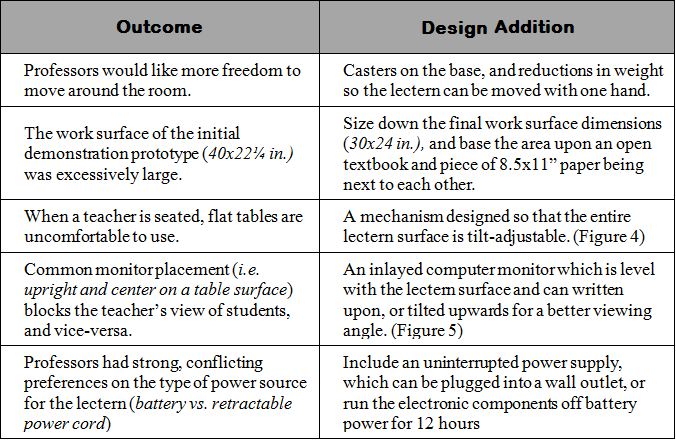PHASESAs
previously stated, the objective of the project was to design a lectern and develop a finalized physical
prototype for presentation to Steelcase Inc. The team broke the
design process leading up to this deliverable into numerous key stages.
Phase 1: Background research + user interviews
Phase 2: Form and Function Development
Phase 3: Seating & Wheelchair Accommodation
Phase 4:
Modularization and Adjustability
Phase 5: Technology Integration
Phase 6: Wire, utility, and peripheral management
Phase 7: Manufacturing refinement
|
USER TESTINGDuring the project, the team solicited user feedback throughout the design process to ensure the useability of the final product. The team conducted three different phases of user testing throughou the design process. Starting with brainstorming and interviews to develop the pre-concept and to understand what professors need in a teaching lectern. Using this feedback, we developed an initial concept design in which we conducted interviews and user testing on to develop a refined concept. Finally receiving user input on the built physical prototypes to find ways in which we could improve it. In total, 53 professors of various specialties at Northern Arizona University critiqued the concept during the design process. Questions posed through these interviews addressed open-ended design problems and helped characterize profiles of current teaching styles. Phase 2 began following the selection of the two-part selection by Steelcase. |
DESIGN CHANGESThe following table summarizes all changes and additions to the design that were a direct result of user feedback. Each of the significant steps will be further explained in following sections. |
 |
Design Process |

_text_